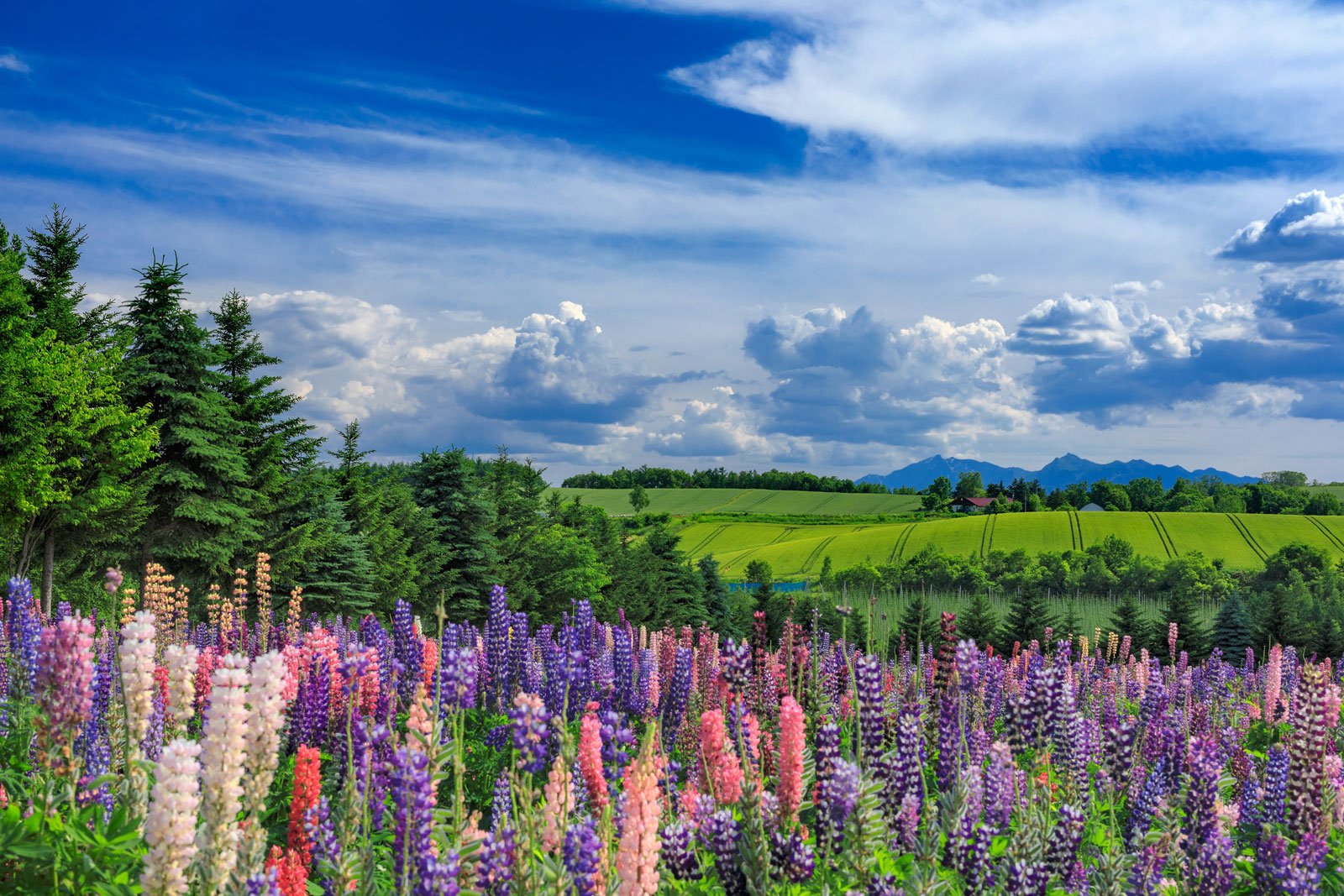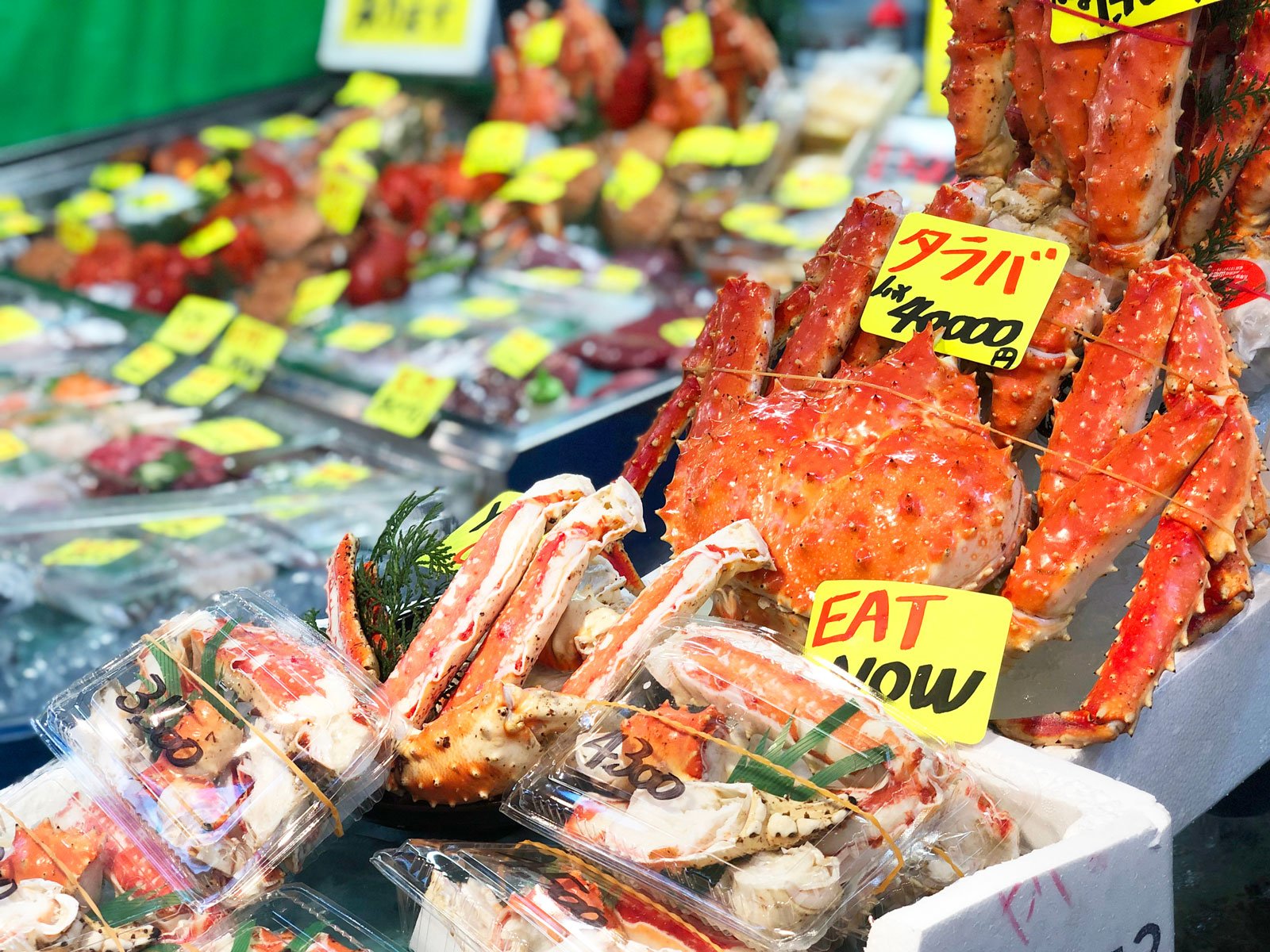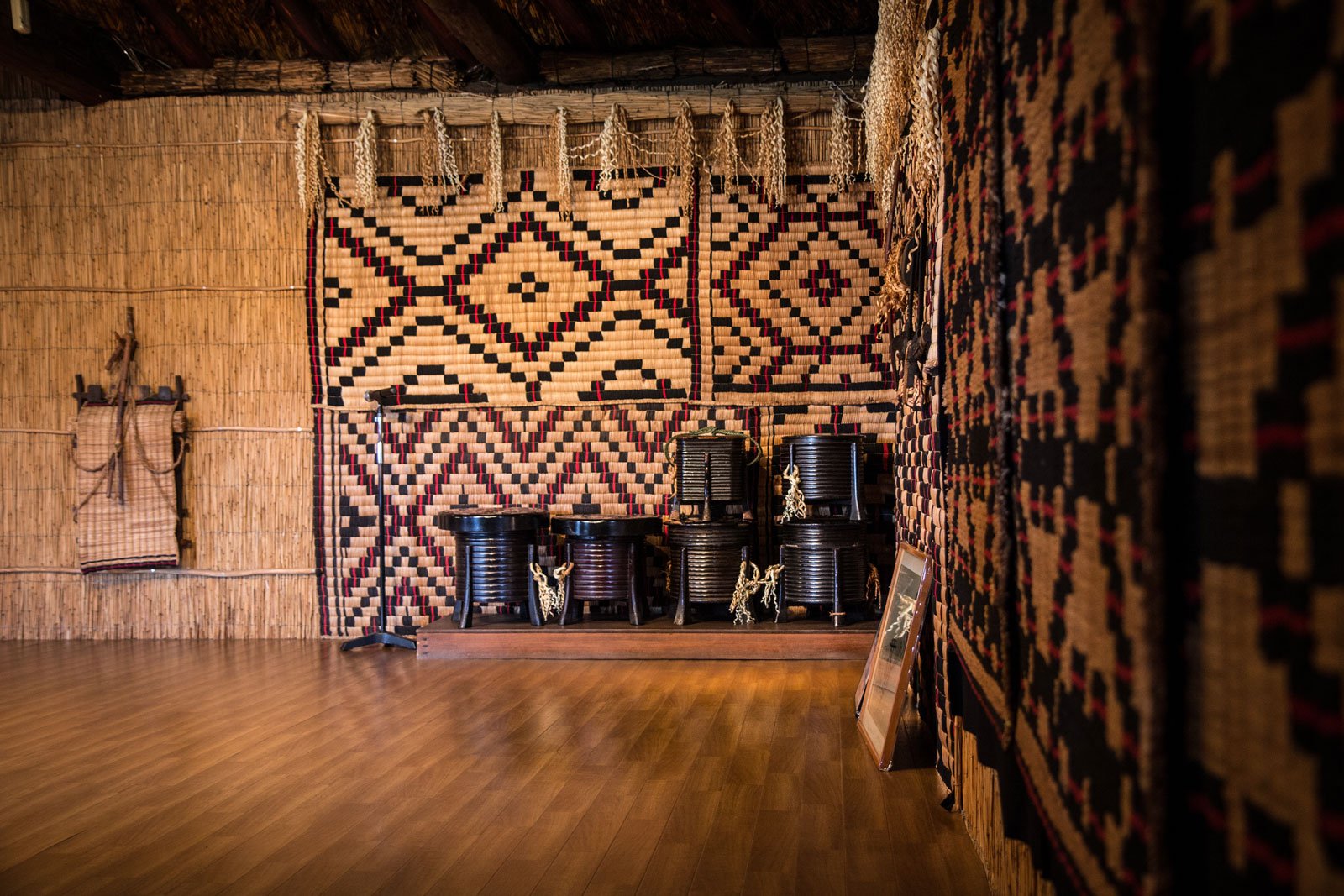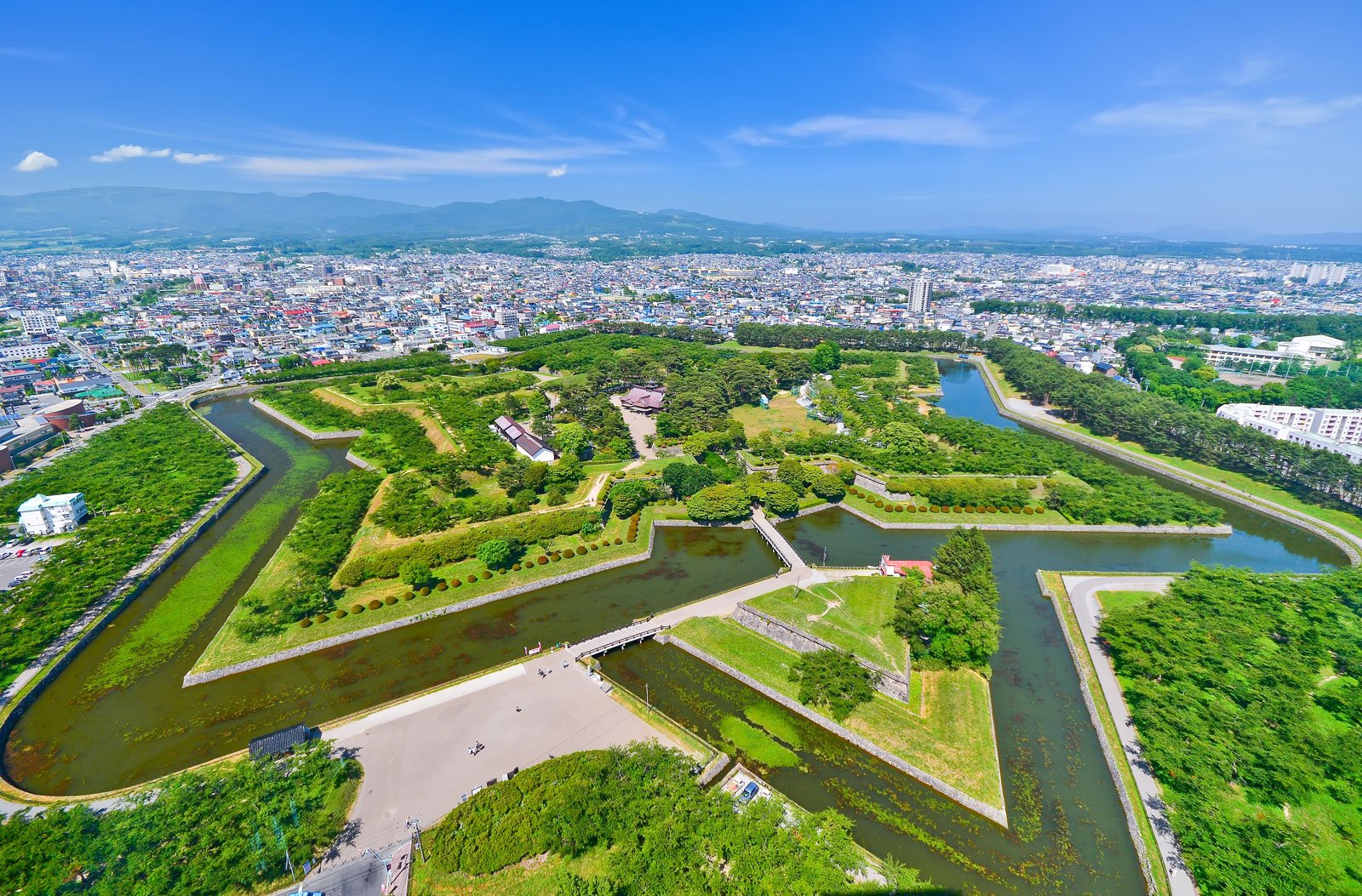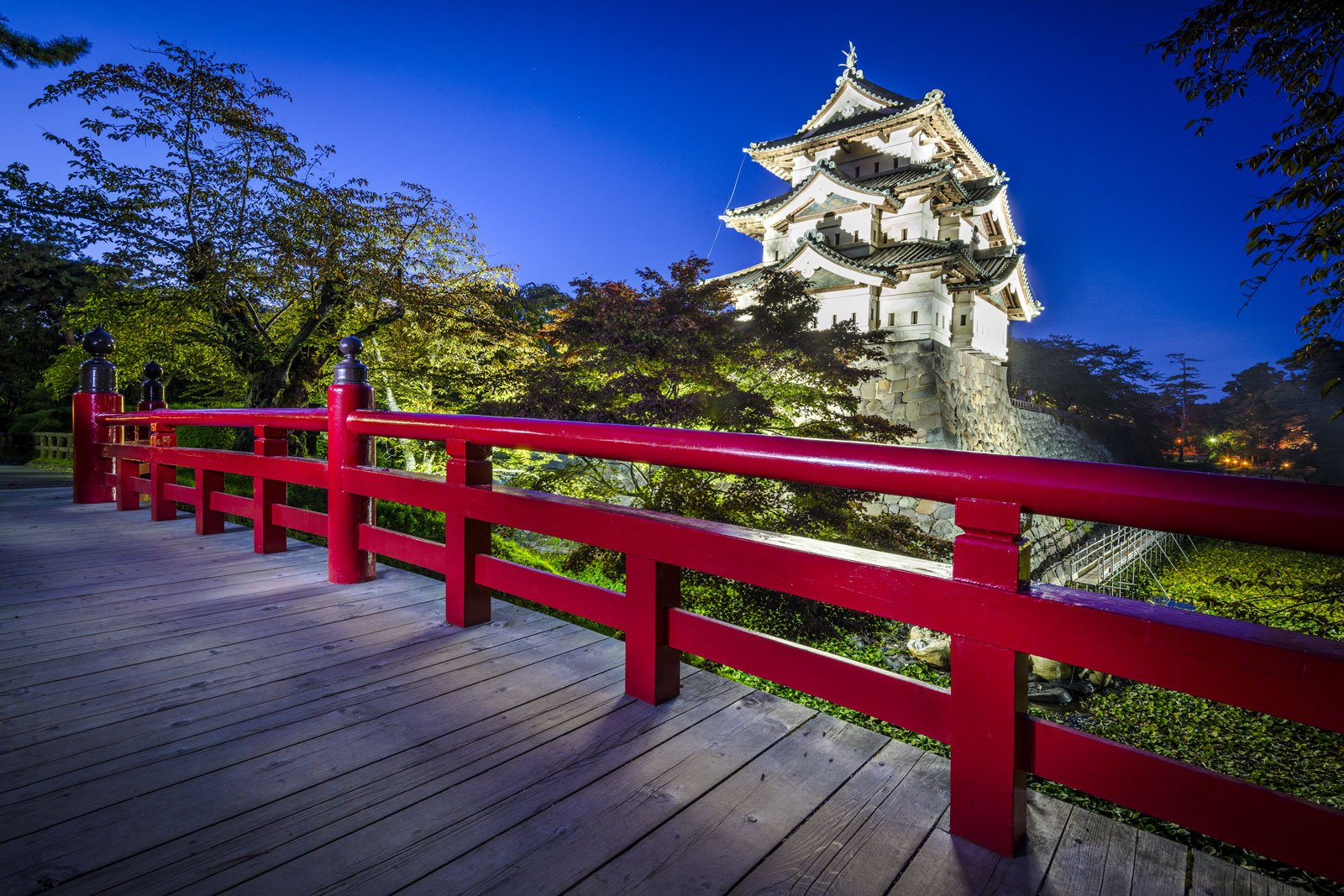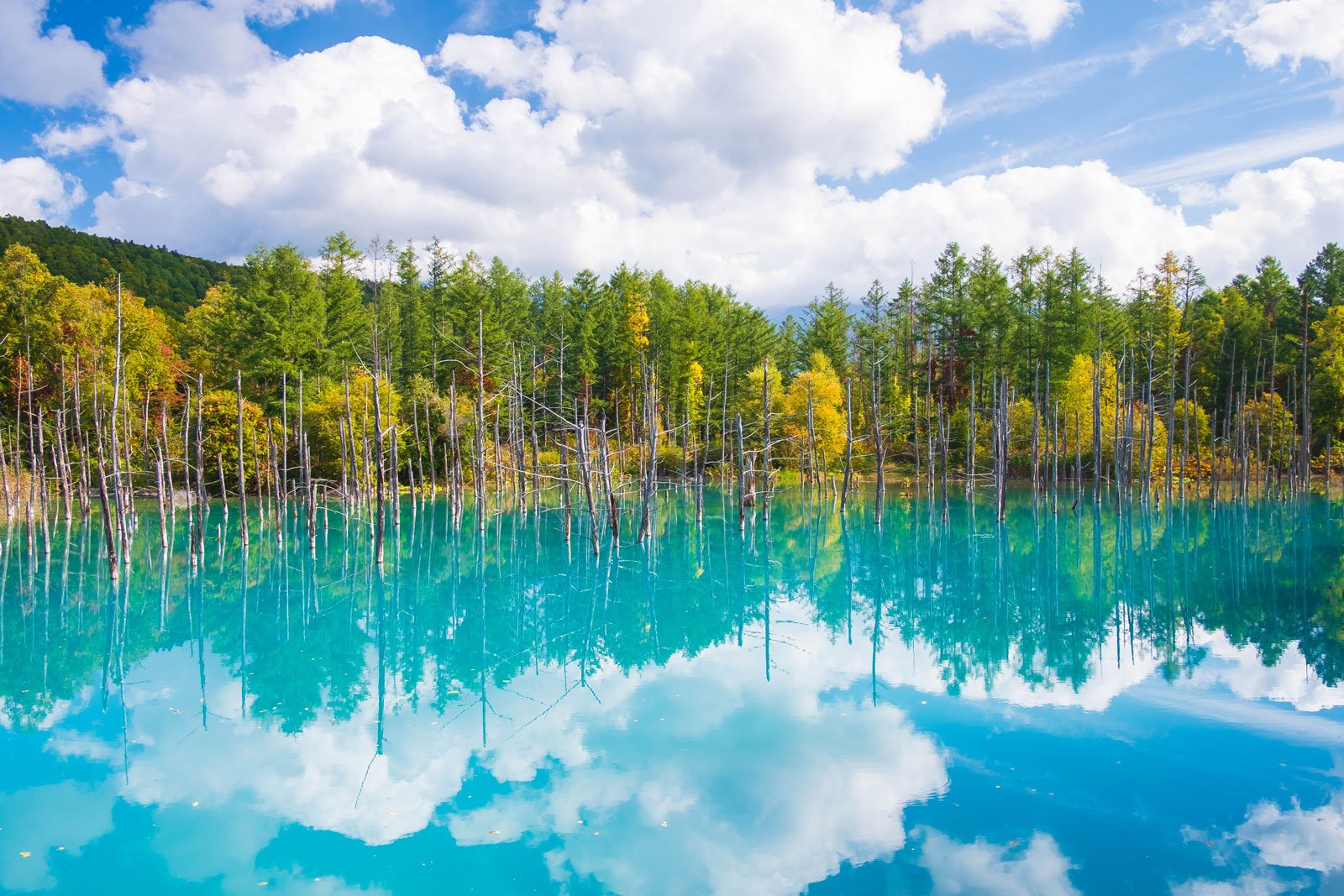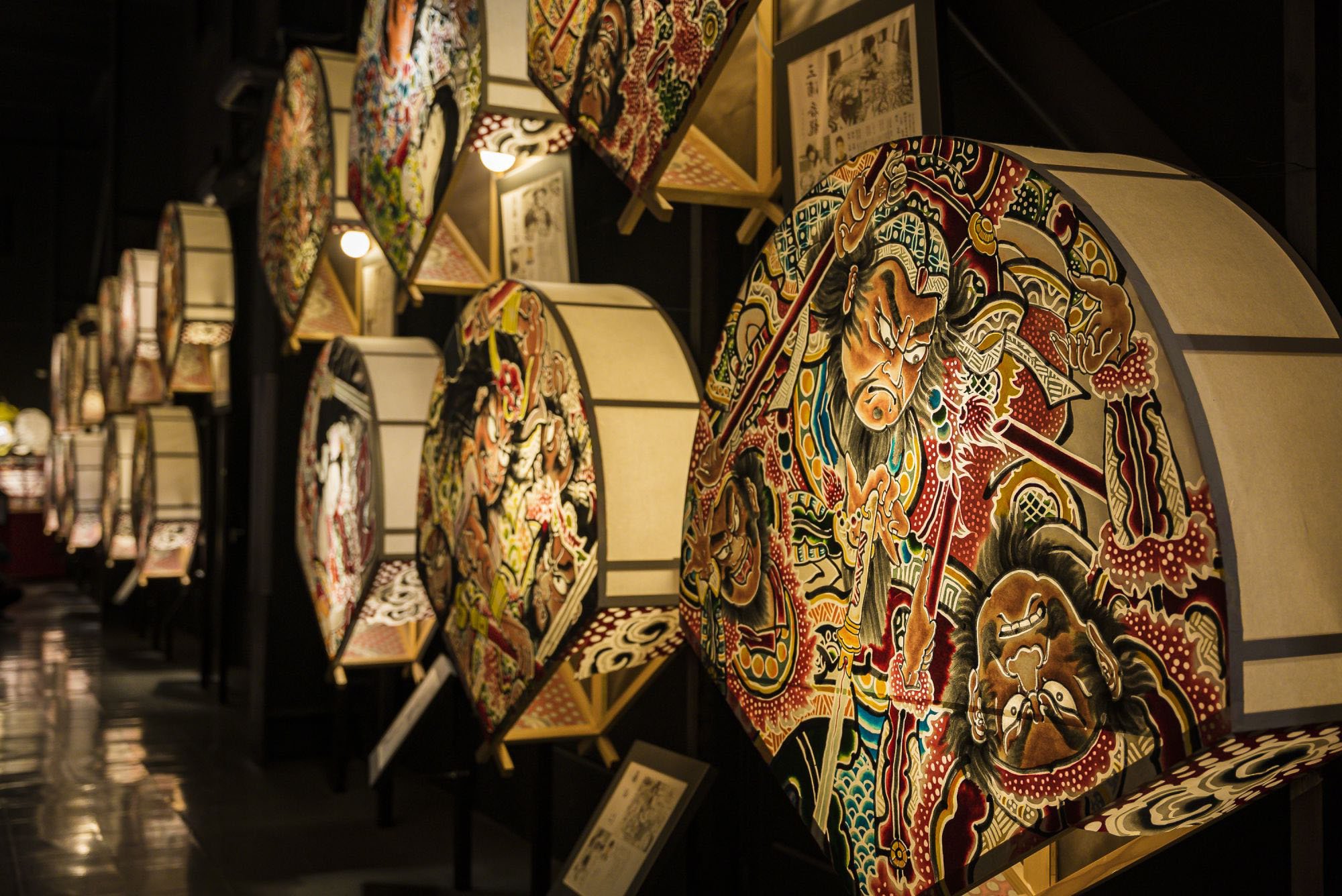
hokkaido & tohoku:
The road north
20 July - 03 august 2025
dr kathleen olive
Discover the path less travelled in northern Japan over its colourful summer, exploring diverse histories, indigenous culture, serene temples and exquisite natural beauty
OVERVIEW
The island of Hokkaido and region of Tohoku both offer a side of Japan not experienced by most travellers, as poet Bashō noted centuries ago in The Narrow Road to the Deep North. Hokkaido’s scenery forms a stunning backdrop for the indigenous Ainu culture, and the island offers art from the traditional to the contemporary, as well as exceptional seafood and locally-grown produce. Tohoku, in northern Honshu, is similarly diverse, and our tour is timed to take in the annual vibrant Nebuta Festival, when enormous lantern floats parade through Aomori’s streets.
This itinerary commences in Sapporo, best known as a winter holiday base but with a mild summer perfect for exploring its modern history and spectacular scenery. Travelling into Hokkaido’s interior, fields of bright flowers form a backdrop to our visits, as we encounter the Ainu village at Noboribetsu and Hakodate’s historic sites.
Crossing the Tsugaru Strait by ferry, we explore Japan’s ancient past at a well-preserved Jomon archaeological site and celebrate in festive Aomori.
The experience is rounded out by Japan’s refined and regional cuisine, and by the expertise of tour leader Dr Kathleen Olive, who is well-known for her courses on Japanese art and history.
TOUR LEADER
Dr Kathleen Olive is a well-known cultural tour leader, with over twenty years’ experience leading tours to Europe, North America, Australasia and Japan.
While Kathleen is particularly known for her expertise in Italy, she has recently pursued a longstanding interest in Japanese art, aesthetics and design. Since 2017 she has led more than ten sold-out tours to Japan and presented regularly on its history and art in popular lectures and online classes.
Details
DATES:
20 July - 03 August 2025
ITINERARY:
Sapporo - 4 nights
Furano - 2 nights
Obihiro - 2 nights
Noboribetsu - 1 night
Hakodate - 2 nights
Aomori - 3 nights
PRICE:
$14,500pp twinshare
SINGLE SUPPLEMENT:
$1,850 for sole use of a double room
DEPOSIT:
$1,500pp at the time of booking
FITNESS:
Above moderate: long days; removing shoes at some sites; unfamiliar diet; possibility of unseasonal weather
GETTING THERE:
The tour starts at 5.00pm on Sunday 20 July 2025, in the lobby of our hotel in Sapporo
GROUP SIZE:
Max. 16 people in a group
-
Explore contemporary art and sculpture in Sapporo and Aomori
Encounter the now-protected indigenous Ainu culture and its traditional crafts, at the Upopoy National Ainu Museum
Understand the influence of the West following Japan’s era of isolation, at Sapporo and Hakodate
Savour fresh seafood from Hokkaido’s pristine waters and enjoy the exceptional fresh produce cultivated in the farms around Furano
Experience the annual Nebuta Festival, with lantern floats, taiko drummers and dancers parading through Aomori
-
SUNDAY 20 JULY - ARRIVAL (D)
An arrival transfer from New Chitose Airport Sapporo is included for all participants; contact us for further information. Meet your tour leader Dr Kathleen Olive and fellow travellers at 5.00pm in the lobby of our hotel in Sapporo, before departing by coach for Mount Moiwa. Here the Mount Moiwa Ropeway takes us three quarters of the way up the mountain, where we complete our journey to the summit by cable car. We enjoy a welcome dinner and admire panoramic views of Sapporo and the Ishikari Plain, before returning to the hotel. Overnight Sapporo.
MONDAY 21 JULY – ART IN SAPPORO (B, L)
This morning we travel to Sapporo Art Park, where the Sapporo Sculpture Garden and Sapporo Art Museum nestle in a verdant forest location. We explore the 7.5-hectare sculpture garden followed by The Hill of the Hidden Buddha, Tadao Ando’s serene architectural centrepiece for a 13.5-metre-high sitting Buddha surrounded by flowering lavender. After lunch in a nearby restaurant we enjoy the collection, which holds work by artists closely associated with Hokkaido and shown in the air-conditioned comfort of the Art Museum. Returning to the city, the later afternoon and evening are at leisure. Overnight Sapporo.TUESDAY 22 JULY – HISTORIC SAPPORO (B, L)
Originally a simple trading post with the indigenous Ainu people, Sapporo city was established by the Meiji government and by 1868 had replaced Hakodate as the capital of Hokkaido. The city’s grid-pattern streets and avenues are modelled after Kyoto, as we understand as we drive through the town this morning past the historic Clock Tower and the American neo-baroque Hokkaido Government Office. We continue to the Historical Village of Hokkaido, an open-air museum consisting of 52 relocated and restored historic buildings of the Meiji and Taisho Periods (1861–1926). The village is divided into four distinct areas – the Town, Fishing Village, Farm and Mountain Villages – to illustrate the lifestyle and industries of that time. After lunch we visit the Hokkaido Museum for an overview of the history, culture and natural environment of Hokkaido, and of its Ainu people. Returning to the hotel by coach, the evening is at leisure. Overnight Sapporo.
WEDNESDAY 23 JULY – AINU CULTURE (B, L)
Today we travel south to the Upopoy National Ainu Museum and Park. In the new museum, we learn about the Ainu people of Hokkaido, Sakhalin and Kuril Islands. A distinctive group with an ancient language and culture unrelated to Japanese, the Ainu have been ignored and at times suppressed. Here, the oral traditions of their way of life, history, spiritual beliefs, arts and crafts, and traditional dance are now being carefully recorded. Following our exploration of the museum and parklands, we enjoy a lunch in the museum restaurant that fuses traditional Ainu ingredients with modern cooking techniques. We return to Sapporo in the afternoon where there is the option to enjoy a tasting of fine Japanese Whiskey at The Nikka Bar this evening. Overnight Sapporo.
THURSDAY 24 JULY – OTARU TO FURANO (B, L, D)
Today we check out and head to Otaru, a small harbour town and an important fishing port since Hokkaido’s late nineteenth-century colonisation. Cobblestoned streets line the historic canal where old warehouses have been restored as shops, restaurants and museums. We visit the City General Museum, housed in the old Otaru warehouse, and Canal Building, with its perspective on regional history and nature from the settlement by the Ainu to the Edo-era herring industry. There is time for lunch and to wander among the well-preserved Western-style merchant buildings on Sakaimichi Street before travelling east to Furano, an agricultural region in central Hokkaido known for its dairy, wine and abundant fresh produce. This evening dinner is in the hotel. Overnight Furano.
FRIDAY 25 JULY – FIELDS OF FLOWERS (B)
This morning we visit the Goto Sumio Museum to view the works of Sumio Goto, illustrator and master of Nihonga or traditional Japanese painting. Reflecting the pre-eminence of nature on Hokkaido, the monumental works are painted with pigments extracted from natural minerals and ores such as lapis lazuli, crystal and malachite. We continue to the Blue Pond,reached by a shortstroll through a larch forest. Named for its deep hue, formed by minerals dissolved in the water, it forms part of an erosion control system for Mount Tokachi. During summer, the fertile fields around Furano are carpeted with blooms grown for commercial use. At Farm Tomita, where the lavender creates a colourful spectacle against the backdrop of the mountains, we wander through the orderly planted fields of flowers before free time for lunch in the cafe. Returning to Furano, the evening is at leisure. Overnight Furano.
SATURDAY 26 JULY – TOKACHI MILLENIUM FOREST (B, L, D)
After checking out, we travel to Obihiro, a rural farming town that was only settled in the late nineteenth century. We stop to explore the Tokachi Millenium Forest, designed by leading British garden designer Dan Pearson. The unique 1,000-year garden comprises different evolving ecosystems intended to reflect the surrounding environment. We continue to Obihiro for lunch before exploring the Obihiro Museum of Art, set in Midorigaoka Park in the town centre. Dinner is in the hotel this evening. Overnight Obihiro.
SUNDAY 27 JULY – GARDENS IN OBIHIRO (B)
This morning we visit the Rokkatei Art Village, where four distinctive art galleries, each in an old house relocated from Croatia, are surrounded by oak forest where local-born artist Masaru Bando’s sculptural pieces are displayed. The nearby Rokka no Mori Garden is planted with six types of wildflowers endemic to the Tokachi region, blooming annually between April and October. Our garden theme continues with a visit to the popular Shichiku Garden. The ambitious passion project of a local home gardener and lover of flowers, the garden features 2,500 varieties of flowering plants, creating a stunning colour palette on show throughout the season. We return to the hotel where the afternoon and evening are at leisure, or you may like to explore Kita no Yatai, an alley containing 20 unique food stalls serving a variety of dishes from yakitori to Chinese and even French cuisine. Overnight Obihiro.
MONDAY 28 JULY – NOROBIBETSU (B, L, D)
We check out and depart for Chitose this morning, where we stop for lunch and visit the Buried Cultural Property Centre that introduces the geological history of the area and displays excavated stone tools form the Paleolithic period, Jomon and Satsumon earthenware and early modern Ainu lacquerware. After lunch, we travel along the foreshore to the onsen town of Noboribetsu, where after dinner you may enjoy the soothing waters of the three types of hot springs available at the hotel. Overnight Noboribetsu.
TUESDAY 29 JULY - TO HAKODATE (B, L)
This morning after checking out, we depart for Hakodate, one of the first Japanese ports opened to Western trade during the Meiji Restoration. After lunch in Hakodate, we visit Fort Goryokaku,a large fortification built at the end of the Edo Period to counter Western military threats. Based on a French design, the fort’s five-pointed star allowed for increased gun battlements and greater fire power, and it witnessed the final battle in the Civil War between Shogun and Emperor in 1869. The fort was soon turned into a public park, with over 1,000 cherry trees along its moats. After checking in to our hotel, there is an excursion up Mount Hakodate by ropeway to enjoy the views. Overnight Hakodate.
WEDNESDAY 30 JULY – HAKODATE (B)
An early start today allows us to experience the bustling atmosphere of the morning market, with a vast range of seafood and fresh produce from across the island. After breakfast at the hotel, we embark on a walking tour of the Hakodate Bay waterfront and explore the remaining red-brick warehouses of early international traders. The late nineteenth century brought an influx of merchants to Hakodate from the West, Russia and China, as we see in Motomachi’sRussian Orthodox Church, Old British Consul and Chinese Memorial Hall. We return to the hotel after our tour, for an afternoon and evening at leisure. Overnight Hakodate.
THURSDAY 31 JULY – TO AOMORI (B, D)
Today we depart by ferry, crossing the Tsugaru Strait between Hokkaido and Honshu to Aomori, a journey of 3 hours and 40 minutes. Following disembarkation at Aomori Port Ferry Terminal, we transfer to the hotel and check in, then take a short walk to the Nebuta Warasse Museum,where we learn about the annual Nebuta Matsuri. This 300-year-old traditional festival, with its carefully crafted floats, is one of Japan’s most famous and the museum allows us to experience the sights and sounds of the parade at close quarters. After our group dinner this evening we pass by the ASPAM building where the completed floats that will feature in the parade are unveiled. Overnight Aomori.
FRIDAY 01 AUGUST – AOMORI ART & CULTURE (B)
Today we survey local art and history, beginning at the Aomori Museum of Art. It showcases contemporary works by artists from the Aomori Prefecture in a striking building designed to resemble the adjacent World Heritage Jomon-era site. A huge room with 19-metre-high ceilings houses Marc Chagall’s enormous backdrops designed for Massine’s 1942 ballet Aleko. Nearby, the Sannai Maruyama Archaeological Site is one of the Jomon Period’s best preserved and most complete villages (13,000–300BCE), discovered by accident during surveys for a baseball field and now offering recreations of some 700 pit-dwellings, long houses and burial pits. Jomon material culture is on display in the Sanmaru Museum, from inventive clay figurines to large ritualistic jade beads. Returning to the hotel, the evening is at leisure. Overnight Aomori.
SATURDAY 02 AUGUST – HIROSAKI & THE NEBUTA FESTIVAL (B, L)
This morning we travel inland to Hirosaki, the capital of the Tsugaru region during the Edo Period. Surrounded by a large park planted with 2,000 cherry trees, Hirosaki Castle (1611) was a five-storey fortification with defensive walls, a moat and watch towers. It was rebuilt in 1810 after a lightning strike. We depart the seat of the feudal lord for the former samurai district, to visit the simply furnished and unadorned Iwata Family Residence and the well-appointed Ito House, residence of the Shogun’s doctor. After a farewell lunch there is time to relax back at our hotel before we attend the Nebuta Festival this evening. The largest of the three great festivals of the Tohoku region, the Nebuta Matsuri is a Japanese fire festival held every August and is a highlight of our tour. From our seats lining the parade route, we view the spectacular lantern floats depicting mythical figures, ancient warlords, gods and Kabuki actors. Painstakingly constructed by locals over the course of a year, the floats are accompanied by taiko drums, musicians – and colourful dancers chanting rassera rassera, an invitation to join the festivities! Overnight Aomori.
SUNDAY 03 AUGUST - DEPARTURE (B)
Our tour arrangements conclude after breakfast in the hotel. There is an included transfer to Aomori airport to connect with afternoon flights to Tokyo. Please contact us when arranging your flights from Aomori to ensure smooth and viable connections. Our partners at Mary Rossi Travel would be pleased to assist with your onward travel arrangements, including flights, transfers and international travel insurance. -
The Sapporo Grand Hotel 4* Sapporo, 4 nights
https://grand1934.com/en/
Shin Furano Prince Hotel 4* Furano, 2 nights
https://www.princehotels.com/shinfurano/
NB: hotel offering an onsen or thermal bathing experience
Nikko Northland Obihiro 4* Obihiro, 2 nights
https://www.jrhotels.co.jp/obihiro/
Noboribetsu Grand Hotel 4* Noboribetsu, 1 night
https://www.nobogura.co.jp/en/
NB: hotel offering an onsen or thermal bathing experience
Hakodate Kokusai Hotel 4* Hakodate, 2 nights
https://www.hakodate-kokusai.jp/en/
ReLabo Spa and Stay 4* Aomori, 3 nights
https://relabo.com/
NB: hotel offering an onsen or thermal bathing experienceA limited number of Japanese-style (i.e. tatami mat) rooms may be available on request in the Noboribetsu Grand Hotel – contact us at the time of booking.
NB: hotels of a similar standard may be substituted.
-
14 nights’ accommodation at 4* hotels
All breakfasts and 13 lunches or dinners
All ground transport, boat and ferry transfers, guided tours and entrance fees to sites as mentioned in the itinerary, and tipping
Expertise of and commentary by Australian tour leader throughout, including a set of pre-recorded lectures
Expertise and assistance of a Japanese-speaking national guide, throughout
-
A $1,500pp deposit is required at the time of booking to confirm your place on this tour.
We will invoice you for the balance due on 06 May 2025.
-
When you book on one of tours, we ask you to accept our terms and conditions.
BOOK YOUR PLace
A deposit of $1,500pp is required at the time of booking to hold your place on this tour.
NEED TIME TO CONFIRM YOUR PLANS?
You can hold a place with no obligation for 7 days while you check your other arrangements
QUESTIONS?
Get in touch with us on (02) 8599 4201 or by email




